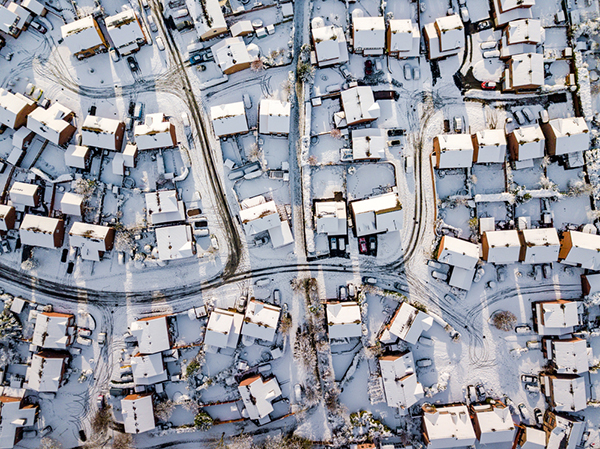Roofing in Cold Weather: Materials to Choose and Installation Challenges
Author: Barbara Horwitz-Bennett | January 4, 2024
As temperatures drop and the chill of winter sets in, homeowners crave the insurance that they have a good roof over their heads. But what is the best roofing material for a snowy climate? And what safety precautions should contractors take for roofing in cold weather?
Here are a few different choices roofing contractors can recommend to their customers, along with tips on how to weather a winter repair job safely.

Slate, Metal and Concrete
If the homeowner has the budget and the home has a strong structural foundation, slate tiles are likely the best option for intense winter weather. Natural stone roofs are extremely durable, and can brave sub-zero temperatures and piles of snow. As long as a slate roof is properly insulated, it can keep a home warm as well.
Another less costly option for roofing in cold weather is metal. Like slate, metal acts as a good insulator. Snow buildup is rarely a problem, as the metal surface easily allows snow to melt and slide off the roof. As a safety precaution, roofing contractors may want to recommend snow guards and heating cables to prevent ice dams and encourage chunks of snow to fall down in smaller pieces.
Another cold-weather roofing possibility is concrete tiles. Just like with slate, the home's foundation must be strong enough to support the additional weight. Contractors should also only offer brands of concrete roofing that are rated to handle freeze-thaw cycles.
Cold Weather Repairs and Installation
Another roofing in cold-weather issue roofers must deal with is wintertime repair or re-roofing work. Impact-resistant asphalt shingles, for example, can provide protection in cold weather, but it's not ideal to install asphalt in frigid temperatures, as the shingles may become brittle and more prone to breakage. The National Roofing Contractors Association (NRCA) recommends storing asphalt supplies in a warm place prior to winter installation and loading a few bundles at a time. The NRCA also suggests hand-tabbing asphalt with an adhesive until it's warm enough for sealants to set properly. Since cold shingles will bend to the shape of the surface they rest on, it's critical to keep them flat, stacked and raised off the ground.
As the risk of slipping, falling and frostbite increases, contractors must take important health and safety precautions. Every crew member needs fall protection equipment and clothing that can withstand wet and cold conditions. If the roof or decking is slippery with ice, postpone work to a warmer day when the surface is completely clear.